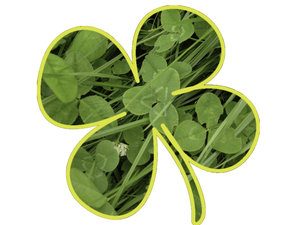"Correct. Mixtures have a more positive effect on soil life than monocultures. If sowing crop 1 and crop 2 is combined, the yield can turn out higher than the average for individual sowing. Sowing a combination of grass and clover is a step that every livestock farmer can easily take".
What else is important in maintaining a rich soil life?
"One thing that many farmers forget is soil compaction. Machines are getting heavier. Although tyres are also getting broader, they do not sufficiently compensate the weight gain. As a result, the soil is pressed too tightly and dense layers are formed in the ground. In addition, the tyre pressure is often incorrect. Although contract workers do have pressure cycling systems on the wheels, I have noticed that they do not always use them. Livestock farmers should be more critical of their contractors in this respect. It benefits soil life and grass production".






